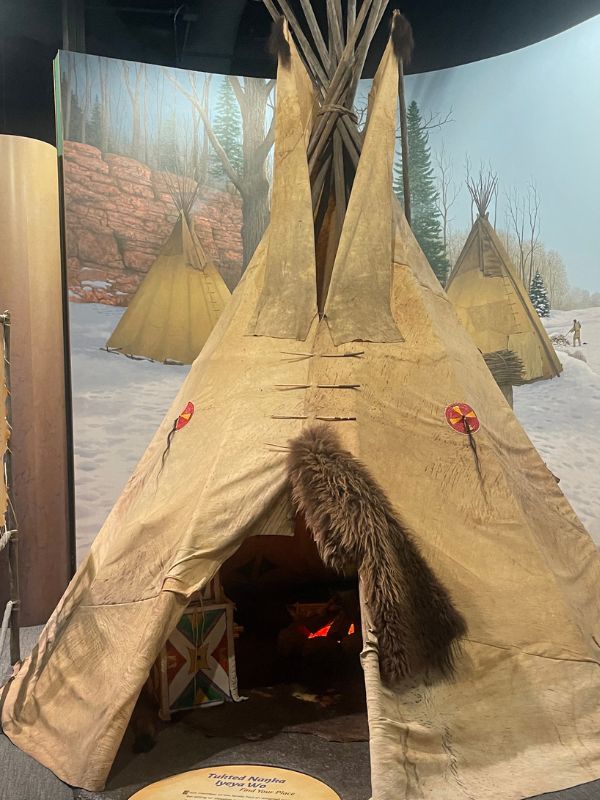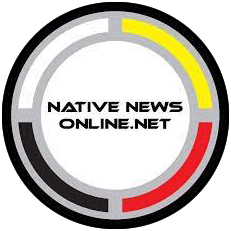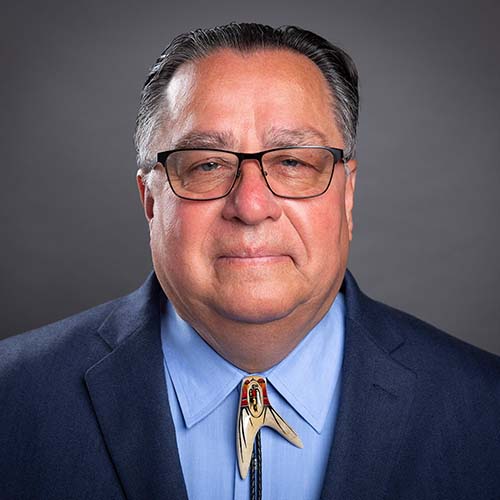
- Details
- By Elyse Wild
“Yahipi kin waste” (Welcome in Dakota) signs greeted visitors to the Hocokato Ti, the Museum and Cultural Center of the Shakopee Mdewakanton Sioux Community in Shakopee, Minnesota, on December 2nd, as they hosted a livestream event to bring attention to the diversity of Native American cultures on Tribal Museums Day.
Tribal Museums Day, which takes place on the first Saturday of December, began last year in celebration of the Association on American Indian Affairs' 100th anniversary. The day also brings attention to Native artists and businesses.
“We have been working on protecting sovereignty, culture, and languages. We appreciate the work that all of these museums do across the country and like to be able to highlight what's going on in all of these different places, ” Frank Ettawageshik, President of the Association on American Indian Affairs, said at the event at Hocokato Ti.
Visitors at Hocokato Ti received free admission to displays that move from prehistory to the present day, starting with a Dakota creation story of how the creator formed the land in the primordial waters.
 Make A Donation Here
Make A Donation Here
Tools, garments, and other historical artifacts surround the walkways of the exhibit. Many pieces come from community members or the Smithsonian’s National Museum of the American Indian in Washington, D.C.
“This has been very important to tell our own story,” Andy Vig, Director of Hocokata Ti, said. Being a tribe and owning our own Tribal Museum and Cultural Center, we get to tell our narrative and perspective. We are very happy to be a part of this day.”
The livestream event also featured museums around the country, including the Navajo Nation Museum, Center for Native Futures, and the Osage Nation Museum.
More than 100 Tribal Museums and Cultural Centers provide significant educational opportunities for the public by sharing wisdom and stories that are told by experts, including elders, academics, researchers, and citizens. Each Tribal Museum has a unique story to share and visitors can learn about local history, purchase art, and other Native-made goods at each museum.
“These places play a vital role within our Native communities and are catalysts for our dynamic cultures. Tribal Museums and Culture Centers do not only interpret and share our culture but their most vital role is to provide space for Native communities to activate and participate in arts and traditions," said Shannon Martin, who emceed the livestream. “We encourage everyone to visit each and every one of these amazing places, the ones that were showcased today, but also the 130 museums throughout the country."
For a complete list of Tribal Museums and Cultural Centers across Indian Country, see the Association on American Indian Affairs website.
More Stories Like This
Zuni Youth Enrichment Project Takes Top Emerging Artist Apprentices to Phoenix for Artistic Exploration and Cultural ImmersionFrom Dishwasher to Award-Winning Chef: Laguna Pueblo's Josh Aragon Serves Up Albuquerque's Best Green Chile Stew
Rob Reiner's Final Work as Producer Appears to Address MMIP Crisis
Vision Maker Media Honors MacDonald Siblings With 2025 Frank Blythe Award
First Tribally Owned Gallery in Tulsa Debuts ‘Mvskokvlke: Road of Strength’
Help us defend tribal sovereignty.
At Native News Online, our mission is rooted in telling the stories that strengthen sovereignty and uplift Indigenous voices — not just at year’s end, but every single day.
Because of your generosity last year, we were able to keep our reporters on the ground in tribal communities, at national gatherings and in the halls of Congress — covering the issues that matter most to Indian Country: sovereignty, culture, education, health and economic opportunity.
That support sustained us through a tough year in 2025. Now, as we look to the year ahead, we need your help right now to ensure warrior journalism remains strong — reporting that defends tribal sovereignty, amplifies Native truth, and holds power accountable.
 The stakes couldn't be higher. Your support keeps Native voices heard, Native stories told and Native sovereignty defended.
The stakes couldn't be higher. Your support keeps Native voices heard, Native stories told and Native sovereignty defended.
Stand with Warrior Journalism today.
Levi Rickert (Potawatomi), Editor & Publisher

